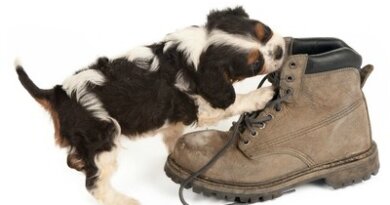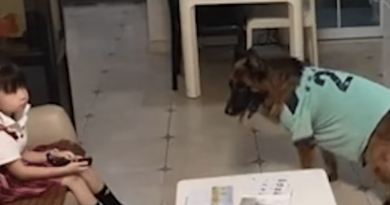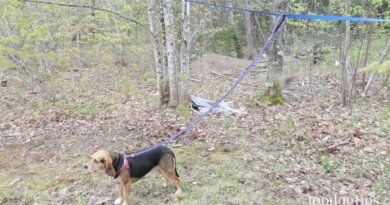Experts Offer Holiday Safety Tips for Pets
Dec. 13, 2021 — Are the holidays stressful for your furry family members?
The winter holiday season is filled with all sorts of get-togethers, from gift exchanges to dinner parties. And with an estimated 200 million Americans fully vaccinated against the coronavirus, many families are planning a normal holiday gathering for the first time in nearly 2 years — a potential stressor from some pets.
According to a study from the CDC, there are about 4.5 million dog bites in the United States each year, and 800,000 of those bites result in the need for medical care. The U.S. population was about 331 million people in 2020. That means a dog bites 1 out of every 73 people.
Here’s what to know about pet safety amid the holiday season, according to experts interviewed.
Mark Brucker, DVM
Owner, Acute Care Veterinary Clinic
Martinez, GA
“Common sense has to prevail. To enjoy your pet around the holidays, you might need to outthink the pet,” Brucker says.
“If you have a dog with any kind of anxiety around people coming over to the house, I would not take any chances. If you have any hesitation about the dog, I would put him away — a crate, bedroom, wherever — to keep him safe.
“Pets do not enjoy the holidays as much as we do. They will not be sad when the party is over that they did not get to see everyone. Do not anthropomorphize your pet and think, ‘Oh, he has to enjoy Christmas with me or else he will be sad.’
“It will make things less stressful for you, the pet, and your guests if they physically remove the dog. If you are worried about the pet themselves, physically remove them from yourself,” he advises.
“You do not want them hurting themselves as they try to get to you, so bring them out and give a heads up to the people there to let them know what is going on. Tell your guests, ‘He is a good dog, usually fine, but let him get a chance to know you. Let him come to you. Let him be the instigator.’”
“Look for how they are holding their ears and tail, how they move through the room,” he says.
Brucker’s own dog, Libby, had anxiety at a family Christmas party. A little girl draped herself over Libby, who promptly released a small growl, and he alerted the girl to stand up and give her space. He watched her closely.
“She gave a warning, but the girl did not hear it. You have to look for those,” he says. “It’s a matter of the owner knowing their dog and letting their guests know what is going on and what they need to do. You will have to think for your guests.”
Brucker says CBD or even Benadryl could help ease any anxiety for pets in some cases.
“At this point, everything with CBD is anecdotal,” he says. “It’s not bad, there is just not a lot known about it.
“Benadryl and other antihistamines can cause a little bit of drowsiness and should be given before guests begin to arrive. If you wait, it won’t work, as it takes about an hour to start working,” he says. “Before the doorbell rings the first time, have some Benadryl ready to work.
“The big guns are the prescription drugs; the things people use for anxiety.
“Some dogs do great when they are boarding — a new personality emerges. When they are away from the home, not guarding it or their owner, they open up. While other dogs, who do great at home, do horribly. They are afraid and get stressed out or cage aggressive,” he continues.
“If you know your dog does well, absolutely board them.
“Negative reinforcement is not going to work. Aggressive behavior and anxiety in animals are extremely complex — just like with people. They are lifelong issues owners have to grapple with and realize they will always have to stay on top of it. And, prescription drugs are great, but they do not work alone. You have to counter condition and use drugs too. Still keeping in mind there could be an incident.
“You know their triggers, so if you avoid them, things will be absolutely fine,” he says.
Melissa Hartley, supporting member, Pet Professional Guild and International Association of Animal Behavior Consultants
Owner, Sindar Kennel
Club affiliation: Weimaraner Club of America
Wagener, SC
“In canine behavior, a bite occurs at the end of a chain of events known as the ladder of aggression,” says Hartley.
“This ladder starts with the dog looking uncomfortable and showing behaviors of a fearful dog. Some of those are extremely subtle — yawning, lip licking, and looking away.
“You climb through the ladder of events if the threat is not removed.”
Next comes piloerection, or hair standing on end, she says.
“These are distance-creating behaviors. The dog attempts to gain distance between itself and the threat,” she explains. “Most dog bites occur out of fear. It is rare that it is caused by something else.
“If the offensive aggression does not occur, the final stage is a dog bite.
“The reason a dog continues up the ladder of aggression to a bite is because two things have or have not happened. Number one, the owner fails to recognize the early stages of the ladder of aggression. They do not recognize their dog is afraid. They do not understand the body language,” she says.
“I use forensic questioning — asking a lot of precise questions to get to the answers,” she continues. “People do not understand when their dog is uncomfortable.
“They are not experts on dog behavior and shouldn’t be expected to be. I often answer, ‘I’ve had my body my whole life, but that doesn’t make me a physician.’”
“They have to bite to make thing go away, because the person has not recognized the dog’s previous signs of aggression.”
And most bites occur with strangers, says Hartley.
“The second thing is, the owner has gotten advice from unqualified people to punish the dog when they growl or bark or snarl at people,” she says. “When you punish away the steps on the ladder of aggression, you no longer get those early warning signs, the dog suppresses them, because they have been punished for them in the past, so they go directly to a bite.
“That is why we do not use punishment with fear-based issues.”
Hartley says that dog owners should get advice from qualified, certified professionals who have continuing education credits.
“Anyone can call themselves a behavioral consultant, though they usually go by dog trainer, even though they have no qualifications,” she says. “They tell people to use shock collars and punish away the warning, and then the owner describes the bite as ‘out of the blue.’ It never is. That is not a thing. It is just that they’ve punished the warning signs out of the dogs.”
“The best thing to do, if they have a dog that is not the most obviously friendly dog, and that should be extremely obvious, the person should give the dog their own space that has a physical barrier between the dog and the people coming into the home,” she advises. “Give the dog something wonderful to do so they do not feel isolated or punished.”
For example, Hartley says owners could place their dog’s crate in another room or use a baby gate and an open doorway. But to be extra safe, two barriers between unsuspecting guests and the dog are better. (Think: closed doors with a baby gate inside the door or a crated dog behind the door.)
Hartley also says toys can be useful in these instances. A special treat could be a cow’s femur bone with squeeze cheese inside.
“They need their own space and something to do. Be prepared to have multiple toys for them ahead of time, so that you can give them things repeatedly during the party,” she says.
“Because if the dog starts barking, the owner gets embarrassed and wants to let them out, and then we are set up for trouble,” she says.
“People need to be told not to bother the dog,” she continues. “You do not want them crated in the room where the party is, trapped.”
As for kids, Hartley suggests letting them help with any toy stuffing, explaining if children feel the family pet is entertained in their crate, they will be less likely to tamper with them, ultimately reducing the risk of injury.
In fact, pet owners can lose their homeowners insurance if their dog bites someone in their home.
“I tell people that to scare them into being safe,” she says.
Should a dog bite occur this holiday season, Hartley says to clean the wound as quickly as possible.
“Cleaning the wound immediately with Betadine (Povidone-iodine) almost immediately or before you get to the hospital is super important because dog bites are a whole different ballgame than other puncture wounds because of the bacteria in the mouth,” she says.
“After the bite, isolate the dog, and then get them qualified help,” she says, referring to veterinary behaviorists, though there are only about 50 board-certified behaviorists in the U.S., she notes. A board-certified canine behavior consultant is another option.
“A veterinary behaviorist is like a psychiatrist, someone with a medical degree who goes back to school to study animal behavior — very advanced,” she explains. “An animal behavior consultant uses all the same scientific methods, but we do not have a medical degree, so we are more akin to psychologists.”
Hartley suggests checking the Pet Professional Guild or the International Association of Animal Behavior Consultants to find those individuals in the case of a dog bite.




